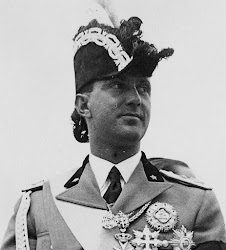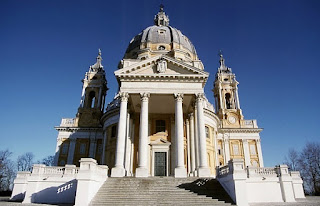The Feast of the Lovers
A day for flowers, chocolates and padlocks
Today is called La festa degli innamorati (The Feast of the Lovers) in Italy when couples celebrate their love for each other. Italian lovers give each other flowers and chocolates and celebrate with romantic dinners just like the rest of the world. Chocolatiers Perugina make a special version of their Baci chocolate for the occasion in a shiny, red wrapper with a red cherry in the centre rather than the traditional hazelnut. Florence and Venice are traditionally considered to be the most romantic places in Italy, but Verona, the city of Romeo and Juliet, puts on several days of celebration for the festival each year, featuring a programme of poetry, music and events, including a Romeo and Juliet half-marathon. The streets around Piazza Bra and Juliet’s house and balcony are illuminated along with the tallest building in the city, the Lamberti tower. The recent fashion for locking padlocks - lucchetti dell’amore - to bridges, railings and lamp posts to demonstrate never-ending love was started in Italy after the publication of the novel Ho voglio di te (I want you) by Federico Moccia in 2006. Read more…
______________________________________
Jacopo Bassano – painter
Artist loved brilliant colours and drew his inspiration from real life
The artist who became known as Jacopo Bassano died on this day in 1592 in Bassano del Grappa in Veneto in northern Italy. He was born in about 1510 in Bassano del Grappa. According to some accounts, he was christened Jacopo dal Ponte, although the inscription on his statue in the town names him Giacomo da Ponte. His father, Francesco il Vecchio, was already a successful painter in Bassano and had established a workshop that produced mostly religious works. Jacopo became an apprentice in his father’s workshop while still a young boy. He made his way to Venice when he was about 20, where he studied under Bonifazio de Pitati, who was also known as Bonifazio Veronese. While in Venice, he met famous artists, such as Titian and il Pordenone, and his work from this period shows Titian’s influence and demonstrates his lifelong appreciation of the great artist’s work. Jacopo Bassano’s earliest paintings also show his love of the brilliant colours used by Titian. Bassano’s Supper at Emmaus (1538), originally commissioned for a church, uses rich luminous colours that distinguish the figures from their background. Read more…
_____________________________________
Otto e mezzo - Fellini's masterpiece
Creative crisis spawned director's tour de force
The film Otto e mezzo (8½), regarded by some critics as the director Federico Fellini's greatest work, was released in Italy on this day in 1963. It was categorised as an avant-garde comedy drama but the description hardly does it justice given its extraordinary individuality, evolving from conception to completion as an interweaving of fantasy and reality in which life not so much imitates art as becomes one and the same thing. By the early '60s, Fellini was already a three-times Oscar winner following the success of La strada, Nights of Cabiria and La dolce vita, the last-named having also won the Palme d'Or at Cannes. La dolce vita had signalled Fellini's move away from the neo-realism that characterised cinema in Italy in the immediate post-war years towards the surreal interpretations of life and human nature that became popular with later directors and came to define Fellini's art. While that movie was generating millions of dollars at the box office and turning Marcello Mastroianni and Anita Ekberg into international stars, Fellini was under pressure from his producers to come up with a sequel. Read more…
______________________________________
Valentina Vezzali – fencer
Police officer is Italy’s most successful female athlete
The fencer Valentina Vezzali, whose three Olympic and six World Championship individual gold medals make her Italy’s most decorated female athlete of all time, was born on this day in 1974 in the town of Iesi in Marche. A police officer who sat in the Italian Chamber of Deputies as a representative for Marche until 2018, Vezzali retired from competition after the 2016 World Championships. Her haul of six Olympics golds in total – three individual and three from the team event – has not been bettered by any Italian athlete, male or female. Two other Italian fencers from different eras – Edoardo Mangiarotti and Nedo Nadi – also finished their careers with six golds. Fencing has far and away been Italy’s most successful Olympic discipline, accruing 49 gold medals and 125 medals in total, more than twice the number for any other sport. Alongside the German shooter Ralf Schumann, the Slovak slalom canoeist Michal Martikán and the Japanese judo player Ryoko Tani, Vezzali is one of only four athletes in the history of the Summer Olympics to have won five medals in the same individual event. Read more…
______________________________________
San Valentino and Sant’Antonino
Celebrations for two different Italian saints
Saint Valentine, a third century Roman martyr, is commemorated with a feast day on this day every year. His name has become associated with the tradition of courtly love but all that is really known about him is that he was martyred and buried at a cemetery on the Via Flaminia in Rome on 14 February. His feast day was first established in 496 by a Pope who revered him. It is thought he was imprisoned and tortured and then hastily buried, but that his disciples later retrieved his body. During the Middle Ages it was believed that birds paired in mid-February and this is probably why Saint Valentine’s Day became associated with romance. But while lovers all over the world raise a glass to Saint Valentine on this day, residents and visitors in Sorrento celebrate the festival of Sant’Antonino, the city’s patron saint. Sant’Antonino Abate died on 14 February, 626. He is credited with saving the life of a child swallowed by a whale and also protecting Sorrento against plague and invasion. Each year on the anniversary of his death, a silver statue of Sant’Antonino is carried in a procession through the streets of Sorrento. Read more...
Book of the Day: Celebrating Italy: The Tastes & Traditions of Italy as Revealed Through Its Feasts, Festivals & Sumptuous Foods, by Carol Field
Italians are passionate about their food and love to celebrate together. At annual village festivals the food is cooked in mammoth proportions, the cobblestone streets become jammed with costumed processions and happy crowds sit and enjoy a communal meal that is a ritual of connection and neighborly love. In Celebrating Italy, Carol Field takes the reader to these exuberant civic feasts and highlights their very special and ancient recipes. The result is one of the most remarkable cookbooks ever written, for in exploring festivals, Field has opened a bright new window on Italian culture and its sumptuous food. Recipes include the victory dinner of Risotto Fratacchione - red onions and sausages eaten after Siena's famous Palio; the Sorbir d'Agnoli - stuffed pasta in wine-spiked broth that the Mantuans eat on Christmas Day; and Pane di Cena's sweet milk bread rolls, made to last all through Easter Week in Sicily.The late Carol Field wrote about Italy and Italian food for 45 years, publishing seven top-selling books on Italian life and cuisine. She contributed to numerous magazines and made regular television appearances on cooking shows in her native United States.







.jpg)


.jpg)



.png)
.jpg)


_(cropped).jpg)


